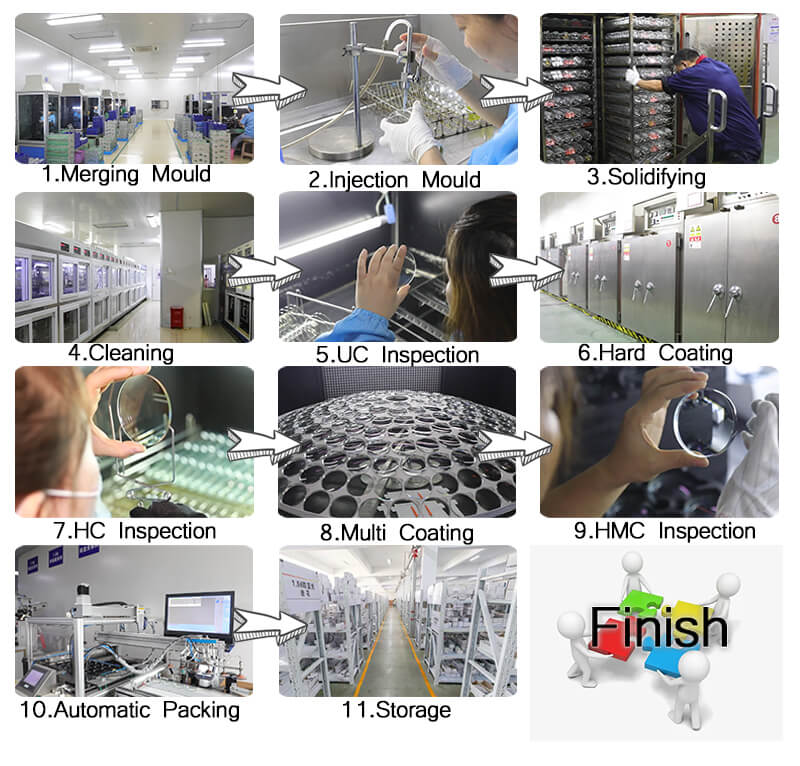1.71 Single Vision HMC Optical lenses

Production Details
| Place of Origin: | Jiangsu | Brand Name: | BORIS |
| Model Number: | High Index Lens | Lenses Material: | KR |
| Vision Effect: | Single Vision | Coating Film: | HC/HMC/SHMC |
| Lenses Color: | White(indoor) | Coating Color: | Green/Blue |
| Index: | 1.71 | Specific Gravity: | 1.38 |
| Certification: | CE/ISO9001 | Abbe Value: | 37 |
| Diameter: | 75/70/65mm | Design: | Aspherical |

The lens index refers to the index of refraction (otherwise known as refractive index) of lens material for eyewear. It is a relative measurement number that describes how efficiently the material bends light. Light refraction will depend on how quick light itself passes through the lens.
Lens materials are classified on their refractive index. This refractive index is the ratio of the speed of light when it travels through air to the speed of light when it passes through the lens material. It is an indication of how much light is bent as it travels through the lens. Light is refracted, or bent, at the front surface of the lens, then again as it exits the lens.A denser material bends light more, so not as much material is needed to achieve the same refractive effect as a less dense material. Hence the lens can be made thinner, and also lighter.
Production Introduction
With regular eyeglasses lenses, the center of the glasses is thinner and the outer edges are thicker to facilitate refraction which is what makes prescription glasses work! High index lenses have a higher index of refraction than regular lenses, which means they don't need to be as thick around the edges to be effective.
High-index lenses mean that the lens itself can be both thinner and lighter. This allows your glasses to be as fashionable and comfortable as possible. High-index lenses are particularly beneficial if you have a strong eyeglass prescription for nearsightedness, farsightedness, or astigmatism. However, even those with a low eyeglass prescription can benefit from high index lenses.

1.71 is a counterattack product. In general, the higher the refractive index, the lower the Abbe number. The 1.67 Abbe number is 32, the 1.74 is 33, and the 1.71 can do 37. The counterattack is successful. The Abbe number is high, the dispersion is low, which is simply clearer.1.67 is much cheaper than 1.74, but it is too thick in terms of height. 1.74 is indeed thin, but the price is relatively high, the middle span is relatively large. Many friends can only choose 1.67 for their wallet. And 1.71 fills that gap.

Product Process





